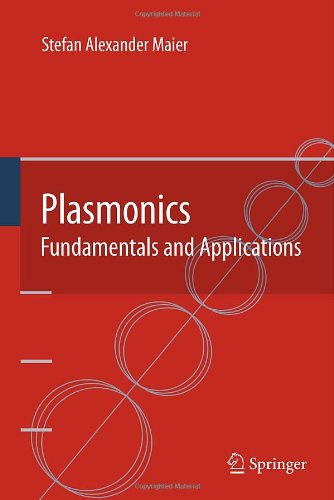

Most ebook files are in PDF format, so you can easily read them using various software such as Foxit Reader or directly on the Google Chrome browser.
Some ebook files are released by publishers in other formats such as .awz, .mobi, .epub, .fb2, etc. You may need to install specific software to read these formats on mobile/PC, such as Calibre.
Please read the tutorial at this link. https://ebooknice.com/page/post?id=faq
We offer FREE conversion to the popular formats you request; however, this may take some time. Therefore, right after payment, please email us, and we will try to provide the service as quickly as possible.
For some exceptional file formats or broken links (if any), please refrain from opening any disputes. Instead, email us first, and we will try to assist within a maximum of 6 hours.
EbookNice Team

Status:
Available0.0
0 reviews
ISBN-10 : 0387331506
ISBN-13 : 9780387331508
Author: Stefan Alexander Maier
Considered one of the major fields of photonics of the beginning 21st century, plasmonics offers the potential to confine and guide light below the diffraction limit and promises a new generation of highly miniaturized photonic devices. Offering both a comprehensive introduction to the field and an extensive overview of the current state of the art, "Plasmonics: Fundamentals and Applications" should be of great value to the newcomer and to the experienced researcher. The first part of the book describes the fundamentals of this research area, starting with a review of Maxwell’s equations in a form suited to the description of metals. Subsequent chapters introduce the two major ingredients of plasmonics, surface plasmon polaritons at metallic interfaces and localized plasmons in nanostructures. The mathematics of their description, excitation and imaging of the modes are discussed. This part closes with a presentation of electromagnetic surface waves at lower frequencies in the THz and microwave regime, comprising both spoof or designer plasmons and surface phonon polaritons. Building on the fundamentals, the second part discusses some of the most prominent applications of plasmons: Plasmon waveguides, extraordinary transmission through aperture arrays, sensing and surface enhanced Raman scattering, spectroscopy as well as metamaterials. Exemplary studies in each of these fields taken from the original literature are presented.
sa maier plasmonics fundamentals and applications
plasmonics fundamentals and applications pdf
plasmonics fundamentals and applications. springer
metamaterials and plasmonics fundamentals modelling applications
fundamentals and applications of nano silicon in plasmonics and fullerines
Tags: Plasmonics, Fundamentals, Applications, Stefan Alexander Maier